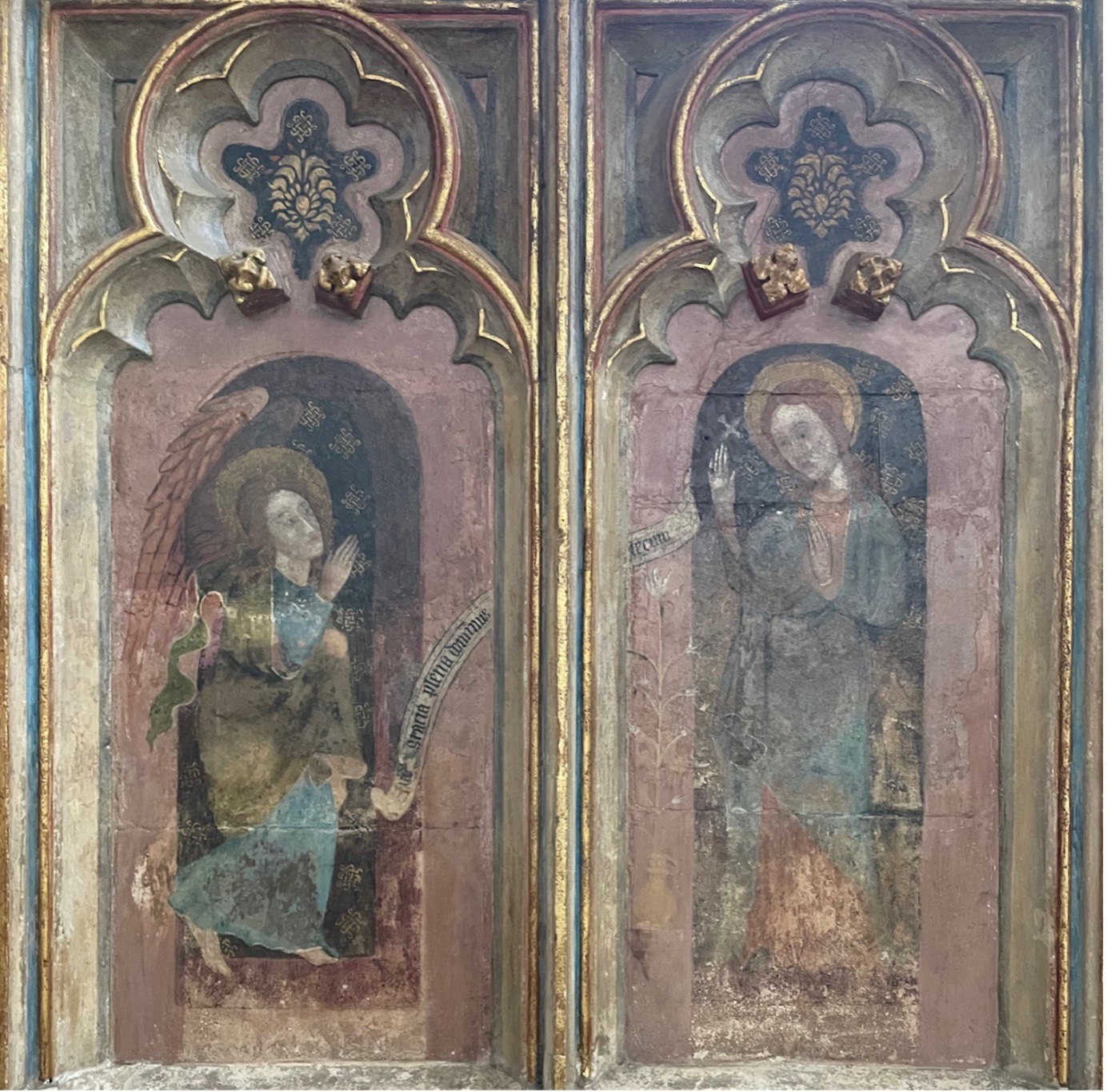 By Canon Ian Morter
By Canon Ian Morter
In the South West corner of the Cathedral on the right had side of the Lady Chapel is the Chapel of St. Gabriel it is a place for quiet prayer as the Blessed Sacrament is reserved in the Ambry by the altar. But, before you enter the chapel, have a look at the stone screen. It is one of the few places in our Gothic Cathedral where the mediaeval wall paintings have survived. On the left of the gated entrance you will find the Annunciation, the Archangel Gabriel greeting the Virgin Mary with the news that she has been chosen by God to be the channel whereby the Son of God would take flesh and enter into the world. Mary will be ‘The God Bearer’.
This past week we recalled the Annunciation on 25 March, and the reason I have focused on the event is not only that it is an important feast day in the Church’s year, but also it ties nicely into this weekend when we celebrate Mothering Sunday, Lent Four, Laetare Sunday. On this day in our country we think about our mothers or those who have had a ‘mothering’ and caring influence in our lives.
The events of the Annunciation are recorded for us by St Luke in Chapter One, verses 26 -38. They tell us how the Angel Gabriel was sent by God to greet Mary in her home in Nazareth. “Greetings favoured one! The Lord is with you.” But she was much perplexed by his words and pondered what sort of greeting this might be. The angel said to her, “Do not be afraid, Mary, for you have found favour with God. And now, you will conceive in your womb and bear a son, and you will name him Jesus. He will be great and will be called the ‘Son of the Most High’, and the Lord God will give to him the throne of his ancestor David. He will reign over the house of Jacob for ever, and of his kingdom there will be no end.” Mary said to the angel, “How can this be, since I am a virgin?” The angel said to her, “The Holy Spirit will come upon you, and the power of the Most High will overshadow you; therefore the child to be born will be holy; he will be called Son of God”.
It is this encounter between Mary and the angelic messenger that is painted on the screen which I have photographed for this article. Over the many centuries of the Christian Church, the Annunciation has proved to be the fourth most illustrated event in the Gospels. Following the Crucifixion, Resurrection, and Madonna and Child. The Annunciation is the foundation of the Incarnation, God becoming Man, and taking our human flesh. Without the Incarnation the Crucifixion and Resurrection of Jesus could not have happened. This, of course, does not mean that God would not have found another way to redeem human kind. All things are possible for God.
And what of Mothering Sunday? Originally the fourth Sunday of Lent, sometimes called Refreshment Sunday, was a day when the rigours of the forty day preparation for Easter were put to one side. The vestments at the Eucharist are Rose, and the ancient introduction, or introit, at the beginning of the service is from Isaiah (66:10 &11 and Psalm 12:1) and speaks of the city of Jerusalem in terms of motherhood:
“Rejoice ye with Jerusalem; and be ye glad for her, all ye that delight in her: exult and sing for joy with her, all ye that in sadness mourn for her; that ye may suck and be satisfied with the breasts of her consolations. I was glad when they said unto me, we will go into the house of the Lord.”
So, on this day in former times, Christians were encouraged to return to the church where they had received their baptism, their mother church. In this country it was not until early in the 20th century (1913) that Mothering Sunday became associated with human motherhood and eventually commercialism has now renamed it Mothers’ Day. In the USA Mothers’ Day is totally separated from Lent and is now celebrated on the second Sunday in May.
Do have a look at the screen of the St Gabriel Chapel in the Cathedral. Like most of the early Christian art, the work is not signed, we know little of its history, but it is one of the medieval treasures of art in Exeter Cathedral.